(25th Home) (1963-1986) (1986-1994) (1994-2001) (2001-2005) (2005-2007) (2007-2013)
The Program Years
The mid-2000s brought many opportunities for OSC, OARnet and ACCAD to expand their impact through the development of various targeted programs, often in collaboration with other organizations. These years brought in the development of local and regional networks, the establishment of the Ralph Regula School and the concept of Blue Collar Computing.
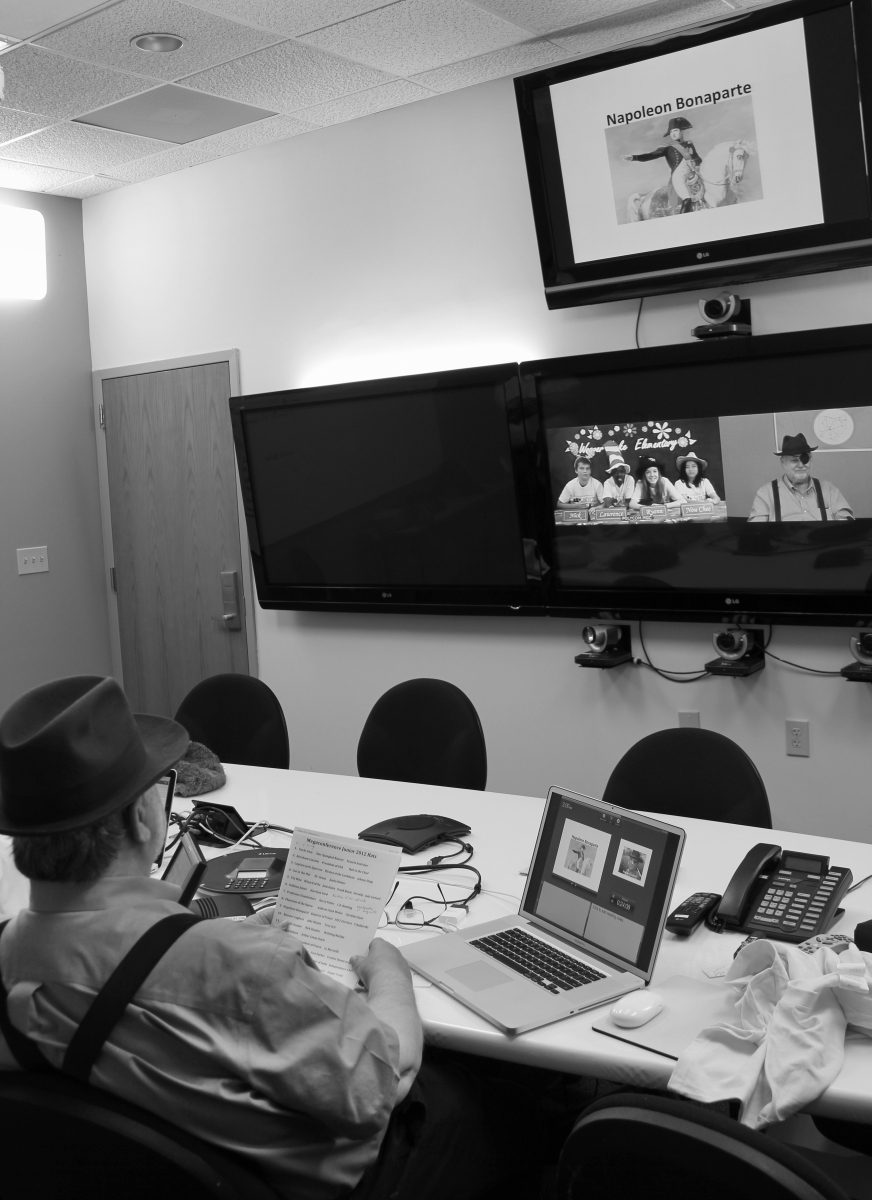
Megaconference Junior
More than 200 school districts and thousands of students from more than a dozen countries worldwide participate in the first Megaconference Junior, assisted by Bob Dixon and OARnet networking. Megaconference Jr. is an international program designed to give students in elementary through secondary schools around the world the opportunity to communicate, collaborate and contribute to each other's learning in real time, using advanced multi-point video conferencing technology.
Pankaj Shah Becomes OARnet Director
After Al Stutz's retirement, Pankaj Shah is appointed director of OARnet in March 2005. Shah returns to OSC after a stint as Marquette University's Director of Infastructure for Information Technology Services. Before that, he was responsible for creating and managing OARnet's Internet2 Technology Evaluation Center (ITEC-Ohio). Shah cited the establishment of the TFN, the nation's leading state research network, as a major factor in his return.
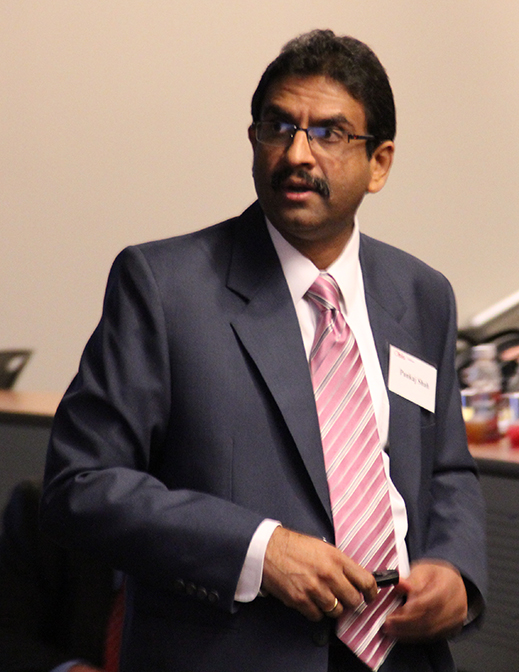
He attributed the support provided by education, government and businesses from TFN's inception as crucial to its success.
At the end of June, the Greater Columbus Free-Net, an early Internet tool created in 1994 by OSC and OSU, ceased most of its operations. Free-Net was an outreach project that promoted information systems and technology use for the enrichment of the Central Ohio community. At its peak, Free-Net served more than 40,000 users, but by 2005 only 300 remained. One of the major web-based projects Free-Net continued was the Community Connection, which assisted with recruiting, training, placing and supporting students as volunteers in local communities.
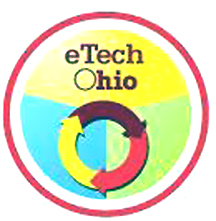
eTech Ohio
In August, OSC engineers completed an early upgrade to the primary core ring on TFN in order to handle the increasing demand for networking services. OSC Optical Engineer Tony Eller said that when eTech Ohio joined the network in late 2004, OSC decided to upgrade Ring-0 sooner than originally planned. eTech Ohio is a new state agency created by the merger of Ohio SchoolNet and the Ohio Educational Telecommunications network to align content, technology resources, and expertise.
International Gigaconference
The first Gigaconference, which demonstrated global video conferencing using high-definition technology for the first time, was also held in August. Organized by Bob Dixon, more than 20 participating sites from around the world gave presentations on a variety of topics, including animated videos, musical performances, classroom teaching experiences and remote medical collaborations. Dixon, one of the world's foremost videoconferencing experts, said the idea for the event was born out of a desire to test the limits of new videoconferencing equipment being produced by such companies as Polycom, Tandberg, Codian, Sony and Radvision, in order to determine the strengths and weaknesses.
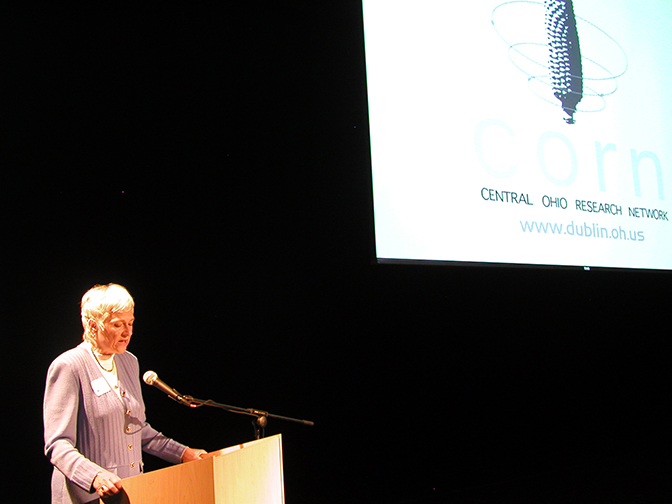
TFN Advances
On the last day of August, the City of Dublin joined forces with TFN in establishing the Central Ohio Research Network, linking education and commerce for research and economic development. The connection established for the first time in Central Ohio a dedicated research network to enable businesses, government and schools to connect directly to OSC and institutions of higher learning and research.
In late October, OSC marked the second year of operations for TFN with an Interactive Digital and Emerging Technologies Showcase at Shawnee State University in Portsmouth. In concert with Shawnee State University’s Shawnee 3.0 Conference on interactive digital technologies (IDT), the TFN event featured demonstrations of virtual reality, video gaming, animation and other related IDT fields. In recent years, Ohio had become a hotbed of serious and entertainment gaming education and development.
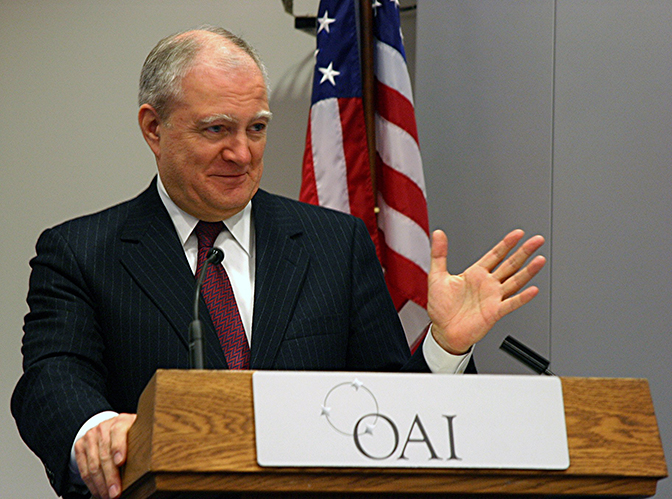
Ralph Regula School of Computational Science Dedicated
On Dec. 16, 2005, the Ralph Regula School of Computational Science was dedicated at the Ohio Aerospace Institute. Dr. John H. Marburger III, science advisor to the president and director of the Office of Science and Technology Policy, provided keynote remarks on the critical role computational science plays in scientific leadership, economic competitiveness and national security at the event that honored Rep. Ralph Regula.
The statewide virtual school – a collaborative creation of OSC, the BOR and the Ohio Learning Network (OLN) with participating colleges and universities – focused on the exciting new area of computational science. The Regula School would help ensure that Ohio has the skilled people needed to support this new approach to innovation. The school relied upon participating colleges and universities to confer degrees and certificates and offer their expertise:
- to develop a multi-institutional, interdisciplinary undergraduate minor in computational science;
- to cultivate and maintain curricula standards for computational science degree programs and certificates;
- to provide assistance (with OLN's help ) in using technology to deliver courses and programs in the most convenient and effective way for students;
- to coordinate with industry to ensure that insights gained from the workplace enter the curriculum as quickly as possible; and
- to support innovative ideas for strengthening program effectiveness, such as a Computational Co-Op program that would make it easier for students to work directly with business and industry while actively pursuing a degree.
ODOD Study for Bandwidth Cost
In June 2006, the Ohio Department of Development commissioned OSC to conduct an ECom-Ohio Study to examine the availability and cost of high bandwidth network services for business and government use. The survey analyzed broadband services and Internet access in all 88 Ohio counties, focusing on areas of government, health care, state agencies and key employers. The study enabled ODOD officials to determine costs associated with the creation of the statewide, high-tech environment required to recruit business and industry to Ohio and provide the workforce training necessary to meet Ohio's future economic development needs.
Blue Collar Computing and Business Act
On June 16, Senators Mike DeWine (R-OH) and Herb Kohl (D-WI) introduced the “Blue Collar Computing and Business Assistance Act of 2006,” an initiative championed by OSC to make high performance computing resources available to small businesses and manufacturers. The bill would authorize up to $25 million per year for five years for the Department of Commerce to create up to five new supercomputing centers across the country. Staff from these centers would help small businesses find areas where supercomputing would help them stay competitive, and then link the businesses with existing supercomputing labs to execute those plans. The centers would also develop software specifically designed to meet the needs of small businesses.
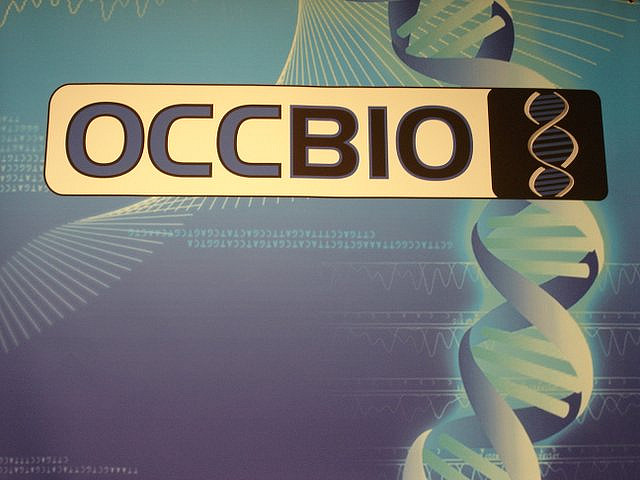
Later in June, OSC helped plan and participates in the Inaugural Ohio Collaborative Conference on Bioinformatics (OCCBIO) at Ohio University. At the conference, OSC and UC’s Genome Research Institute recruit research biologists to help test its new computational biology tool, GRIDP. Today, the event is known as GLBIO, or the Great Lake Bioinformations conference.
OSC Networking Expansions
In July, OSC and Merit Network Inc. (Michigan's statewide network organization) announced a partnership to enhance regional optical networks in the Midwest, including acquiring managed fiber from Toledo to Chicago, as well as jointly pursuing fiber acquisition to the east of Ohio.
In August, OneCommunity and OSC Networking sign a definitive agreement to connect two of the nation’s largest and fastest digital networks.
NSF HPC Grant
Also in August, OSC was awarded $520,000 by NSF to help develop faster and smarter storage systems to improve and increase the processing power of high performance computing (HPC). The three-year grant was part of the High-End Computing University Research Activity (HECURA) program, a national effort that promoted and funded research and education projects involving storage and retrieval of data in large-scale computing systems. Headed by Dr. Pete Wyckoff, OSC research scientist, the study developed software tools that delegated more tasks to storage devices, thus increasing the processing capacity of supercomputers. Dennis Dalessandro and Ananth Devulapalli, OSC Networking researchers, and several graduate and undergraduate students also focused on improvements in performance, scalability, functionality and management.

Award-winning Blue Collar Computing
In November, OSC’s Blue Collar Computing received prestigious HPCwire 2006 Readers’ Choice Award for “Best Collaboration Between Government and Industry.” HPCwire is considered the leading source for global news and information covering the ecosystem of high productivity computing. Each year, HPCwire polls its international database of readers, contributing editors, and industry luminaries to determine the winners of these prestigious awards. Several thousand people were polled by random sample to determine those chosen.
Later that month, OSC and EWI announced a partnership to provide remote portal access of HPC systems and software to EWI welding applications. As part of its innovative Blue Collar Computing initiative, OSC provided remote portal access of HPC systems and software to EWI welding applications — a tremendous cost-saving resource that would reach engineers at over 200 companies. Welding involves the complex interactions of a high number of physical processes. Integrated numerical simulation tools were needed to improve the performance of welded structures. Through OSC’s HPC application interface, engineers could then easily input product dimensions, welding process parameters and other specifications to conduct complete online simulations of welding procedures to determine the strength and viability of its prototypes.
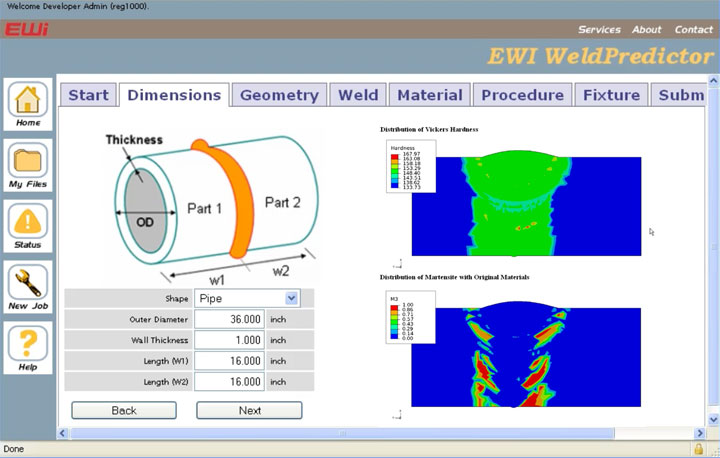
University Research Access to OSC
Also in November, OSC extended user eligibility to include research scientists who maintain full-time positions administered by an Ohio academic institution. Graduate and postdoctoral students came to enjoy the same access through their professors. Unlike many computing facilities, OSC’s liberal user policy put some of the world’s most powerful supercomputing resources at the fingertips of academic researchers and computational scientists – resources that were once exclusively reserved for tenure-track faculty members.
On Dec. 1, researchers and commercial industries remotely accessed electron microscopes at OSU’s Center for Accelerated Maturation of Materials over the Internet through remote instrumentation via the TFN. With this ability, CAMM’s scanning/transmission electron microscopes were becoming valuable tools for remote researchers making new discoveries about the structure-property relationships of a wide spectrum of materials. CAMM’s advanced microscopes were available to the broader research community in Ohio and other selected areas in the U.S. To make this remote access possible, OSC provided and maintained essential high-resolution video image transfers, as well as optimum response times.
Bob Dixon was busy again in 2006, receiving the first-ever Internet2 IDEAS award for the Megaconferences and their spinoffs. He also organized the first Collaboranza!, demonstrating the state of the art of collaboration tools and their interoperability.
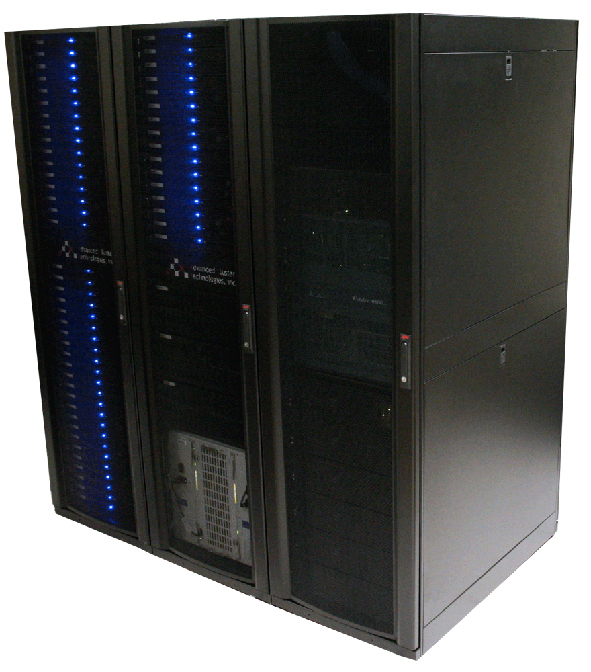
BALE Cluster Upgrades
Near the end of January 2007, OSC upgraded its BALE Cluster, a distributed/shared memory hybrid system constructed from commodity PC components running the Linux OS. The more powerful system resided in a separate server room from OSC’s on-site training facility, eliminating classroom noise and heat generated from the computers. This improved environment allowed students to run hands-on exercises faster without distractions. The updated cluster boasted 55 rack-mounted compute nodes. Each node contained a dual core AMD Athlon 64 processor integrated with nVIDIA GeForce 6150 graphics processing units (GPU). An application taking full advantage of the system, using all AMD and nVIDIA processing units, could reach one trillion calculations per second.
TFN Becomes OSCnet
In February, the name of the Third Frontier Network was changed to OSCnet so that audiences would more clearly associate the network with OSC. This was deemed important to minimize confusion for OSCnet users and those who provide funding for the network, including the higher education partners that were central to the inception and implementation of the network. The OARnet offices also became known for a time as OSC Networking.
On April 24, 2007, OSCnet was connected in Cleveland to the new Internet2 Network. OSCnet members previously connected to Internet2 through a node in Indianapolis. American Fiber Systems Inc. of Rochester, New York, had recently received contract approval from the state Controlling Board to provide the fiber connections between OSCnet and the Internet2 node in Cleveland. In additional to gaining an Ohio presence on the high-performance network, the timing of the OSCnet project provided Ohio with an early connection to the deployment of a next-generation version of the Internet2 Network. The first phase of the deployment included Cleveland and other sites, such as New York, Philadelphia, Washington, Chicago and Boston.
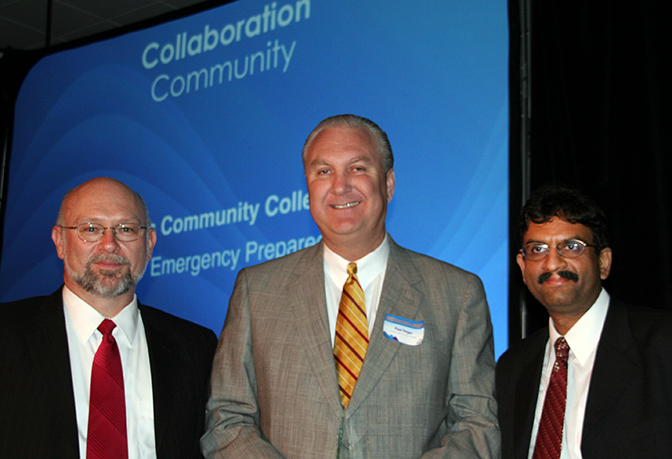 On May 1, examples of leadership, collaboration and research using Ohio’s cyberinfrastructure showcased at the 2007 Advanced Technology Summit awards:
On May 1, examples of leadership, collaboration and research using Ohio’s cyberinfrastructure showcased at the 2007 Advanced Technology Summit awards:
- Firefighters near Toledo brace for the heat of a flashover in a simulator while firefighting students at a university campus many miles distant study the live-action video over a fiber-optic network.
- Middle school students in Appalachian Ohio immerse themselves into a society on a virtual island they visit over the state-of-the-art network, moving about, walking, running and even flying through highly developed landscapes, park-like settings and buildings.
- More than 2,000 researchers from 50 different countries access a server at a university in Cincinnati to analyze the function and structure of proteins, aiding in their studies of various health issues such as breast cancer.
Adding to the event’s theme of innovation, the Cleveland Institute of Music performed the first live, bi-location concert in Ohio. Two musicians in Columbus and three in Cleveland performed together via a high definition video-stream, traveling at high speed (10 to 30 megabits per second) through the OSCnet fiber-optic network. OSCnet engineers and researchers worked with an array of emerging network technologies to ensure the audio and video components of the concert met the demands of the accomplished musicians.
Ralph Regula School Receives NSF Grant
In June, NSF awarded a three-year, $695,000 grant to RRSCS to develop an associate degree concentration program in computational science. OSC’s Ralph Regula School of Computational Science led a partnership that included Owens Community College near Toledo, Sinclair Community College in Dayton and Stark State College in Canton. The Ralph Regula School was designed as a virtual statewide school focused on teaching computer modeling and simulation to solve real-world problems in a wide range of fields including medicine, manufacturing, finance and earth science. The collaborative project was titled, “Computational Science Program for Ohio Community and Technical Colleges.” The NSF grant was awarded through the foundation’s Advanced Technological Education program.
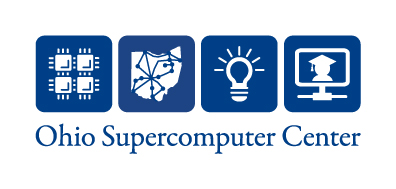
OSC Restructuring
That month, OSC also unveiled a new corporate logo and guidelines. The logo featured the full name of the organization and four blue blocks, each containing a white icon representing one of four distinct functions carried out within the organization: supercomputing, networking, research and education. At the same time, OSC repositioned its organizational structure and management to better serve evolving customer and infrastructure requirements. OSC’s new structure was designed to align the organization to achieve several objectives:
- Offer an integrated customer service approach and expanded offerings to a growing academic and industry base
- Combine staff expertise areas to provide both a breadth and depth of support across and within service areas
- Provide a comprehensive project and customer management system
- Develop concentrated support for new initiatives, focusing on computational science, engineering, industry outreach, and state government communities
- Allow for rapid development and scalable deployment of new services that will enhance the success of OSC’s academic customers and Ohio's business and industry
John Glenn Cluster

Also in June, OSC purchased a 4212-CPU IBM Opteron Cluster (Phase 1) and named the cluster after former astronaut and statesman John Glenn. The acquisition of the IBM Cluster 1350 included the latest AMD Opteron multi-core technologies and the new IBM cell processors. Ten times as powerful as any of OSC’s current systems, the system offered a peak performance of more than 22 trillion floating point operations per second. OSC’s new supercomputer also included blade systems based on the Cell Broadband Engine processor. This allowed Ohio researchers and industries to easily use this new hybrid HPC architecture.
Broadband Ohio Initiative
On July 27, Gov. Strickland created the Broadband Ohio initiative to extend the reach of Ohio’s broadband resources, further Ohio’s leadership in network innovation and improve technology access for all citizens throughout the state. The Broadband Ohio executive order paired higher education’s OSCnet (formerly the Third Frontier Network) with the Next Generation Network (NextGen Network), a new state and local government network that was being developed by acquiring available bandwidth from OSCnet. The order also created the Ohio Broadband Council to serve as the coordinating body for Broadband Ohio and to provide oversight of the initiative from a policy, procedure, process and development standpoint.
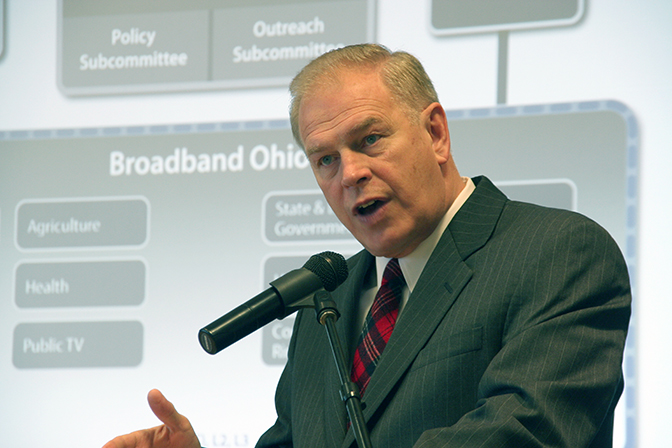
The Ohio Broadband Council was co-chaired by Ohio’s chief information officer and the executive director of the Ohio Supercomputer Center.
Blue Collar Computing Surges Forward
On Aug. 6, an OSC's Blue Collar Computing initiative was unveiled in legislation co-sponsored by Senators Voinovich and Kohl. Representative Ryan also introduced a companion bill in the U.S. House. S. 1948 and HR 3466 authorize up to $25 million per year for 5 years for the U.S. Department of Commerce to create up to five Advanced Multidisciplinary Computing Software Centers across the country. Under the legislation, the proposed Centers would institute collaborations between organizations with strong economic development credentials in supercomputing and small businesses/manufacturers seeking to employ technology to maximize performance.
In September, EWI launched a new online weld simulation tool, E-Weld Predictor, offering improved productivity and profitability to its companies. Resulting from a partnership announced the prior November, this product integrated EWI’s engineering domain knowledge with the supercomputing power of OSC. EWI worked with OSC staff on the engineering application and collaborated on the user interface design. OSC developed the web layout, the middleware, and is hosting the application on its supercomputers.
That same day, Sept. 5, under an agreement with PolymerOhio, OSC pledged to develop web-based applications targeted toward helping polymer companies. The applications transparently accessed the Center’s supercomputing systems and software. These tools were positioned to accelerate product and process development, as well as problem solving, by allowing engineers to quickly do “what if scenario” calculations.
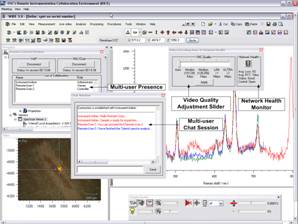
In October, BOR funded a “shared instrumentation” pilot research project to gain a greater return on large investments in extraordinary instruments such as electron microscopes, nuclear magnetic resonance spectrometers, Raman spectrometers, and ion accelerators at Ohio universities. Electron microscopes, for example, can cost a university $450,000 to $4 million to purchase and require yet more funding for operation and maintenance. To address this challenge, Prasad Calyam, a senior systems developer at OSC, and his colleagues have developed the Remote Instrumentation Collaboration Environment (RICE) – a unique software package that Calyam described to international colleagues in a presentation Oct. 11 in Verona, Italy, at the First International Conference on Immersive Telecommunications.
On Nov. 20, CASC created a scholarship in memory of Dr. Charlie Bender, the founding chairperson of CASC and executive director of OSC from 1988-2001.
OSCnet Provides Connections for Health Care
Also in November, four Ohio regional telehealth networks using OSCnet received $417 million in federal funding to “significantly increase access to acute, primary and preventive health care in rural America.” The four projects would receive more than $35.4 million over three years, representing the largest state share of funding among the 42 states and three U.S. territories garnering awards through the Federal Communications Commission’s Rural Health Care Pilot Program. According to proposals, these projects would provide high-speed connections to facilities in nearly half of Ohio’s 88 counties. The regional telehealth networks connected to Broadband Ohio’s backbone to transport data traffic between regions in Ohio, as well as to use OSCnet to access Internet2. This fulfilled a key requirement of the grant – that the healthcare traffic be able to flow across the country from Ohio.
(25th Home) (1963-1986) (1986-1994) (1994-2001) (2001-2005) (2005-2007) (2007-2013)


 (April 2)
(April 2)
 (March 18)
(March 18)